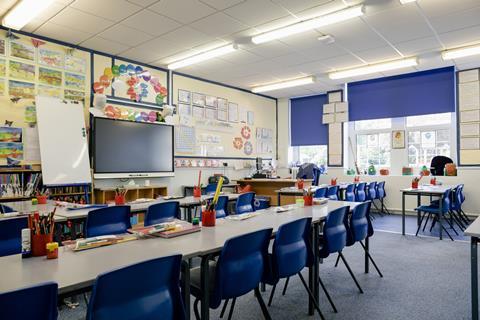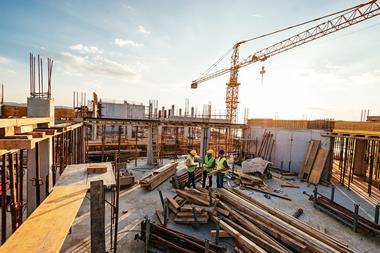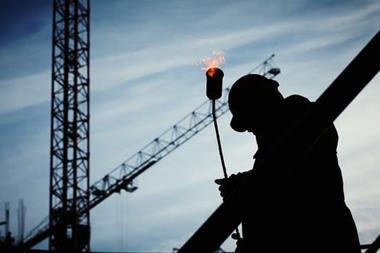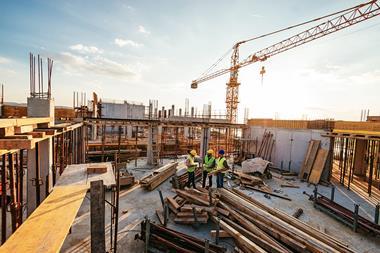‘Any structure built with RAAC should be assessed for potential risks to ensure the safety of the public occupying such buildings’ says loss adjuster
What happened?
At the end of last month (31 August 2023), hundreds of schools across the UK were surprised to receive orders from the Department for Education (DfE) to immediately shut down certain buildings.

Just as many prepared to welcome pupils back from the summer holidays, the government department told schools that they must close buildings constructed with reinforced autoclaved aerated concrete (RAAC).
Government reports suggested that 156 schools in England had construction elements that had used the material, with only 52 having put mitigations in place to prevent collapse.
Rushed warnings from the department noted that, despite previous risk assessments, it now deemed these buildings as at risk of collapse.
However it’s not just schools that are affected, commercial property owners including hospitals, theatres and other public buildings could all need to make urgent repairs.
The insurance implications
Many schools remain closed, with insurers warning that education clients must ensure their policies reflect any building remediations.
John Melbourne, principal risk management surveyor at specialist insurer Ecclesiastical Insurance, said: “It is really important that schools discuss any construction work with insurers to understand any implications.
“The issues around RAAC have been known for some time – RAAC was very popular from the 1950s owing to the fact that it was viewed as a cost-effective form of construction, but recent inspections and incidents in schools have brought the issue to light again.”
Schools must also inform their brokers and insurers of the status of temporary accommodation, as its use could not be covered by existing policies.
”RAAC was very popular from the 1950s owing to the fact that it was viewed as a cost-effective form of construction, but recent inspections and incidents in schools have brought the issue to light again.”
Phil Webster, executive director for education and the public sector at Gallagher, told Insurance Times: “Schools that are utilising alternative accommodation should contact their broker and provide details of any temporary buildings or facilities that are being used by pupils or staff to ensure that they have the correct insurance in place.”
He added that schools should ensure they were properly covered during building work by a contract works insurance policy.
“[Schools] may already have this in place as part of their standard insurance policy,” he said.
“However, the cover is usually limited and may not be sufficient for major repairs – schools should contact their insurance broker, who can advise if they need additional insurance.”
How to manage RAAC threats
Schools are being told by the DfE to put mitigations in place to make the buildings safe, however, it is vital that these works are done by approved contractors and following the DfE’s guidance.
In the face of potentially costly remediation, the government has confirmed that it will fund the works and provide short-term accommodation if needed.
However, with so many buildings across the country requiring repairs to make RAAC elements safe – including hospitals, theatres and other public buildings as well as schools – the supply of repair and building labour may be further constricted.
This may further complicate the issue of acquiring labour for property insurers as the supply diminishes.
The Federation of Master Builders’ (FMB) chief executive Brian Berry told Insurance Times: “Local builders may struggle to cater for the scale of the issue facing schools, as they tend to have full schedules for months ahead.
”Being proactive and addressing the potential problems associated with RAAC could save on extremely costly repairs in the long run.”
“This could affect the speed of work, like putting up portable classrooms to ensure children don’t miss lessons.”
An FMB statement added that more than half of its members had reported they were already falling behind schedule on projects as they struggled to hire skilled workers to fulfil order books – with roles including roofers, insulation installers and asbestos removal specialists expected to be particularly in demand following the structural surveys that must be completed for buildings constructed with RAAC elements.
Stuart Baxter, the operations director for loss adjustor Sedgwick, added: “Being proactive and addressing the potential problems associated with RAAC could save on extremely costly repairs in the long run.
“Any structure built with RAAC should be assessed for potential risks to ensure the safety of the public occupying such buildings – the property expert may decide that immediate temporary measures need to be taken, such as propping or an exclusion zone around the areas of high risk.
“When considering the acquisition of commercial property, we would always recommend that building professionals are appointed to undertake a building survey to report on the condition of a property as part of the due diligence process, as this will avoid the complications of unknown capital expenditure if problems are discovered further down the line.”




















No comments yet